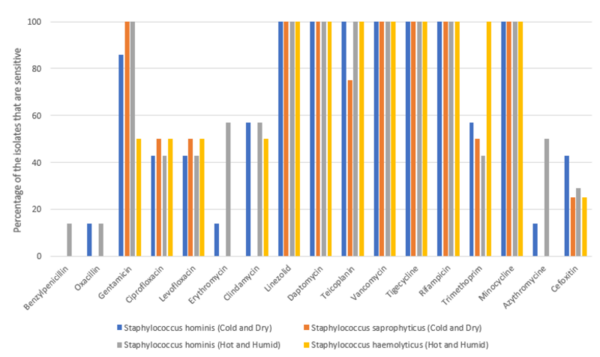Effect of environmental factors on bacterial flora of normal human skin
(1) Cambridge International Foundation School, (2) Department of Microbiology, Tagore Hospital and Heart Care Center
https://doi.org/10.59720/24-182
Human skin hosts an abundance of diverse microorganisms including bacteria, fungi and viruses that constitute the cutaneous microbiome. This microbiome is responsible for homeostasis, immune modulation, and protection from pathogens. The resident bacterial flora of the skin is generally innocuous in healthy individuals but can become a source of disease in those who are immunocompromised. The bacterial flora is implicated in infectious and non-infectious diseases of the skin such as non-healing ulcers, acne, and atopic and seborrheic dermatitis. Bacterial colonization of the skin depends on the characteristics of the local microenvironment – acidity, temperature, humidity, nutrient levels, etc. However, the effect of external environmental conditions on the composition of bacterial flora are unknown. We hypothesized that exposure to hot and humid environmental conditions could result in a microflora characterized by more pathogenic species of bacteria compared to that of people exposed to cooler and dryer conditions. The bacterial flora of the cubital fossa of two cohorts, one working in hot and humid conditions, and the other working in cold and dry conditions was analyzed by culturing. The most common species isolated in both groups was Staphylococcus hominis ssp hominis. Staphylococcus saprophyticus was found in individuals working in cold and dry environments while hemolytic coagulase-negative Staphylococci, which are known to be more pathogenic, were found only in individuals working in hot and humid environments. Although these differences were not statistically significant, we concluded that individuals exposed to different environmental conditions may have differences in their skin bacterial flora and hence, in their susceptibility to disease.
This article has been tagged with: